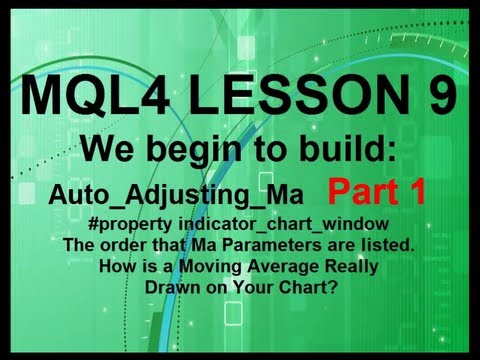Return on Capital Employed Learn How to Calculate ROCE
Contents:


It’s a gauge of profitability, regardless of the size of the business. This means that it’s not very useful for investors comparing businesses in different sectors. ROCE cannot remain constant over time and will change from year to year, based on the company’s annual market performance.
Return on Capital Employed is just one ratio that you can use in your analysis for future growth predictions. It’s the same for any potential investors – they won’t just consider your ROCE number, it’ll be part of their overall investigation into your attractiveness as a prospect. A ROCE calculation gives a specific number, showing how much profit per £1 you’re generating. And this particular ratio involves both equity and debt, making it very useful for investors comparing different companies within the same industry over a set forecast period. Using ROCE as a single metric of performance is ineffective since it only provides information on the company’s capital usage.
Want More Helpful Articles About Running a Business?
It has a payment period of up to 54 days, which means you have the flexibility to invest where it’s needed while you generate revenue1. “I’ve cut costs, notably speculative spend on social media channels that weren’t generating positive return,” she says. She has also reworked shipping operations in a way that allows her to benefit from volume discounts, and negotiated better terms with suppliers.
Petards Group (LON:PEG) Might Be Having Difficulty Using Its Capital Effectively – Yahoo Eurosport UK
Petards Group (LON:PEG) Might Be Having Difficulty Using Its Capital Effectively.
Posted: Sat, 06 May 2023 07:44:06 GMT [source]
Key profitability ratios such as ROIC and ROCE help determine the viability of an investment based on the profitability of the company and the proper use of invested capital to grow the business. The ROCE tells you how well you’re employing your capital to make a profit. It’s a financial ratio that compares your yearly pre-tax profit with your capital employed. Looking at the longer-term picture, a company’s return on capital employed needs to be greater than its average cost of capital.
How to Calculate Return on Capital Employed
ROCE is particularly effective in comparing companies in capital-intensive industries, such as oil and gas companies. This capital creates wealth through investment and can include such things as a company’s marketable securities, production machinery, land, software, patents, and brand names. Khadija Khartit is a strategy, investment, and funding expert, and an educator of fintech and strategic finance in top universities.
Examples of current liabilities listed on a company’s balance sheet include accounts payable, short-term debt, and dividends payable. ROCE is calculated by dividing a company’s earnings before interest and tax by its capital employed. In a ROCE calculation, capital employed means the total assets of the company with all liabilities removed. ROCE can be calculated by dividing earnings before interest and taxes by capital employed. It can also be calculated by dividing EBIT by the difference between total assets and current liabilities.
To determine whether Apple’s ROCE is good, it is important to compare it against its competitors and not across different industries. Let us compute the return on capital employed forApple Inc.We will look at the financial statements of Apple for 2016 and 2017 and calculate the ROCE for each year. The interest coverage ratio is a debt and profitability ratio used to determine how easily a company can pay interest on its outstanding debt. Profitability ratios are financial metrics used to assess a business’s ability to generate profit relative to items such as its revenue or assets. A ROCE of at least 20% is usually a good sign that the company is in a good financial position. But keep in mind that you shouldn’t compare the ROCE ratios of companies in different industries.
What Is Return on Average Capital Employed?
ROCE, on the other hand, is the net operating income divided by the capital employed. The return on capital employed measures the efficiency of capital usage in generating earnings. It is commonly used by investors to compare the efficiency of capital usage of businesses within the same industry. Investors tend to bid up the prices of businesses that have a consistent or increasing ROCE, and are less interested in those with a highly variable or declining ROCE. Making investment decisions is a rigorous process that requires investors to make various considerations before making the final decision.
Loan To Value RatioThe loan to value ratio is the value of loan to the total value of a particular asset. Banks or lenders commonly use it to determine the amount of loan already given on a specific asset or the maintained margin before issuing money to safeguard from flexibility in value. CAs, experts and businesses can get GST ready with Clear GST software & certification course. Our GST Software helps CAs, tax experts & business to manage returns & invoices in an easy manner. Our Goods & Services Tax course includes tutorial videos, guides and expert assistance to help you in mastering Goods and Services Tax. Clear can also help you in getting your business registered for Goods & Services Tax Law.
Return on capital, in addition to using the value of ownership interests in a company, also includes the total value of debts owed by the company in the form of loans and bonds. All else equal, most seasoned investors would choose to invest in a company with both higher ROE and ROC compared to a company with lower ratios. Return on capital measures the same but also includes debt financing in addition to equity. Add return on capital employed to one of your lists below, or create a new one. All appropriate overheads would have had to be taken into account, including a return on capital employed.
Gain in-demand industry knowledge and hands-on practice that will help you stand out from the competition and become a world-class financial analyst. Gordon Scott has been an active investor and technical analyst or 20+ years. Discover how to trade with IG Academy, using our series of interactive courses, webinars and seminars.
Return on Capital Employed (ROCE): What is it and How to Improve it
Hence, they consider multiple documents to evaluate the firms’ productivity better. The EBIT shows the income that a company generates and records before deducting the debts or taxes. It is calculated when the sum of the cost of goods sold and operating expenses are subtracted from revenues. Just upload your form 16, claim your deductions and get your acknowledgment number online.
- Return on Capital Employed is a financial ratio that measures a company’s profitability and the efficiency with which its capital is employed.
- She has worked in multiple cities covering breaking news, politics, education, and more.
- As an investor, the ROCE metric is powerful as it allows you to assess both profitability and the efficiency of capital used to generate that profit.
- It can be more closely analyzed with ROE by substituting net income for EBIT in the calculation for ROCE.
- Return on equity is the ratio that helps determine a business’s profitability with respect to the shareholder’s equity.
- This is the same as your shareholders’ equity, minus long-term liabilities.
Return on capital employed is a financial ratio that measures a company’s profitability in terms of all of its capital. Both ROI and ROCE are financial metrics that determine how well a company utilizes its capital for operations and growth. ROCE is primarily used when comparing companies within the same industry, whereas ROI can be used with more flexibility.
Two companies with similar earnings and profit margins may have very different returns on their capital employed. While they may look similar on the surface, they would have significantly different attitudes toward spending capital. Traders can use ROCE as part of their fundamental analysis to establish whether a company is utilising its capital well or not . Return on capital employed is a financial ratio companies use to gauge their performance.
ACE ROCE is 44 cents per capital dollar or 43.51% vs. 15 cents per capital dollar for Sam & Co., or 15.47%. Net operating profit after tax is a measure of EBIT x (1 – tax rate). This takes into consideration a company’s tax obligations, but ROCE usually does not.
Also known as operating income, EBIT shows how much a company earns from its operations alone without interest on debt or taxes. It is calculated by subtracting the cost of goods sold and operating expenses from revenues. Capital employed can give a snapshot of how a company is investing its money. However, it is a frequently used term that is at the same time very difficult to define because there are so many contexts in which it can be used. All definitions generally refer to the capital investment necessary for a business to function.
Why Is ROCE Useful if We Already Have ROE and ROA Measures?
As with any financial metric, it’s best to do an apples-to-apples comparison. As you can see, Sam & Co. is a much larger business than ACE Corp., with higher revenue, EBIT, and total assets. However, when using the ROCE metric, you can see that ACE Corp. is more efficiently generating profit from its capital than Sam & Co.
In the case of ROIC, a company can be described as profitable if the ROIC value is greater than zero. When ROCE is below the cost of capital or the ROIC is negative, it shows that the company has not used invested capital effectively. The invested capital is a subset of employed capital, and it is the percentage of capital that is actively invested in the business.
As a result, it is always preferable to combine the ROCE ratio with other financial measures in order to make more educated investment decisions. Imagine you’re an investor, comparing the profitability of two businesses that both sell candles. Business A generates profits of £20,000, while business B generates profits of £30,000. Business B appears more successful, but has invested three times as much capital as business A to achieve its profits.

Based on the facts provided, compute the company’s ROCE for the year. They are often used together to produce a complete evaluation of financial performance. Capital employed refers to the amount of capital investment a business uses to operate and provides an indication of how a company is investing its money. Although capital employed can be defined in different contexts, it generally refers to the capital utilized by the company to generate profits.
If the ratios are trending down over a span of several years, it means the company’s profitability levels are declining. Conversely, if ROCE is increasing, this means the company’s profitability is increasing as well. This is most commonly earnings before interest and taxes, though you can also strip out any earnings from investments, in order to focus more clearly on the return from operations. Funds from operations, or FFO, refers to the figure used by real estate investment trusts to define the cash flow from their operations. There are a number of different figures from the income statement and balance sheet that a person could use to get a slightly different ROE. A common method is to take net income from the income statement and divide it by the total of shareholder equity on the balance sheet.
ROCE includes equity and debt capital but does not evaluate short-term debt. Return on equity is a measure of financial performance calculated by dividing net income by shareholders’ equity. A higher return on capital employed suggests a more efficient company, at least in terms of capital employment. A higher number may also be indicative of a company with a lot of cash on hand since cash is included in total assets. Capital employed is calculated by taking total assets from the balance sheet and subtracting current liabilities, which are short-term financial obligations. The return on capital employed ratio shows how much profit each dollar of employed capital generates.
BrightView Holdings (NYSE:BV) Might Have The Makings Of A Multi-Bagger – Simply Wall St
BrightView Holdings (NYSE:BV) Might Have The Makings Of A Multi-Bagger.
Posted: Fri, 05 May 2023 11:41:14 GMT [source]
The main drawback of return on capital employed meaning is that it measures return against the book value of assets in the business. As these are depreciated the ROCE will increase even though cash flow has remained the same. Thus, older businesses with depreciated assets will tend to have higher ROCE than newer, possibly better businesses. In addition, while cash flow is affected by inflation, the book value of assets is not.

In finance, a return is the profit or loss derived from investing or saving. ROC takes into account both debt and equity, while ROE only looks at equity. Cory is an expert on stock, forex and futures price action trading strategies.
